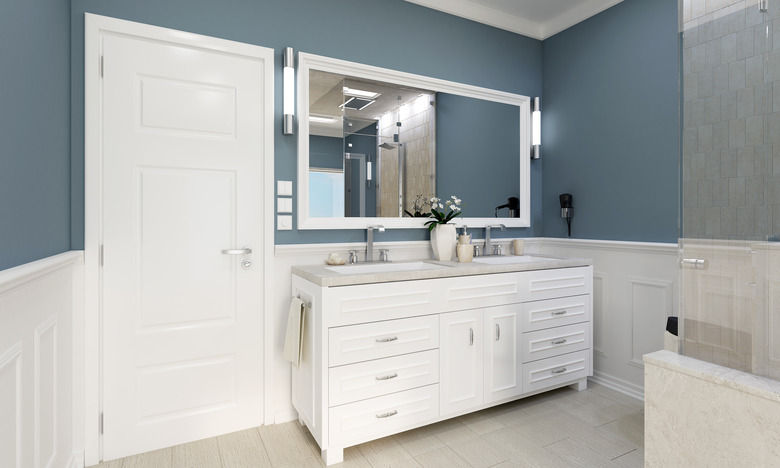What Is Causing Painted Bathroom Walls To Look Chalky In Some Spots?
Chalky spots on bathroom walls may be caused by mold or efflorescence. Both of these conditions are caused by moisture behind the wall or ongoing dampness in the room. Mold and efflorescence can become serious maintenance issues if left unresolved. Damage may occur to your walls, and it could be a potential health concern. Many insurance companies will not cover remediation if it is determined that the homeowner did not take proper maintenance steps to resolve the problem.
Tip
Chalky spots on bathroom walls may be caused by mold or efflorescence. Both of these conditions are caused by moisture behind the wall or ongoing dampness in the room.
What Is Efflorescence?
If you have plaster walls, it is possible that a chalky appearance is a result of water wicking or seeping through the plaster walls from behind. As the water seeps through plaster, it carries with it mineral salts that are deposited on the surface of the wall.
As the moisture dries, the mineral crystals are left as a powdery chalky surface stain. Any type of masonry behind the wall may cause efflorescence to appear on the wall. Newer homes with modern drywall will not have efflorescence on the bathroom wall. You can remove efflorescence stains using muriatic acid, but this is a very strong cleaner and must be used with caution.
Note that a white color on plaster or any type of wall can occur from water droplets after a shower or bath and doesn't necessarily mean that you have a serious moisture problem. If the white markings go away once the wall dries, then you likely don't have a serious problem.
Mold on Walls
Mold on walls can appear as a white chalky stain. Mold is a result of ongoing moisture and can be dangerous to your health. Mold and mildew test kits are available at home improvement stores. A kit will give a positive or negative reading on mold but will not tell what kind of mold is present. Some kits offer a lab test option for sending in a sample for additional fees. Another good resource for mold inspection is to call a building inspector. Find a building inspector that is certified for mold inspection.
Before trying to remove mold yourself, consult the EPA's website to understand the type of mold you have and whether you should undertake mold removal on your own.
Ventilation for Moisture Mitigation
The first step toward resolving moisture problems is to ventilate the bathroom. Install a bathroom fan if you do not already have one. Leave bathroom doors open when not in use and towel dry walls, shower doors and mirrors if you live in a high humidity climate. If installation of a bathroom fan is not practical, use a small fan on the bathroom vanity to circulate air.
Resolving Underlying Causes
If moisture mitigation does not resolve the problem, further investigation is warranted. Remove a portion of the wall where the problem is occurring. Removing mold can be hazardous, so wear a protective mask and gloves when investigating the problem.
Inspect pipes, studs, insulation and all other material inside the wall for moisture. Look for signs of additional mold or mildew. If there is masonry behind the wall, look for chalky crystalline salts on the surface indicating efflorescence. Have the necessary repairs made to resolve the problem.
